Looking at new usernames collected by our Cowrie honeypots, you will first of all notice a number of HTTP headers. It is very common for attackers to scan for web servers on ports that are covered by our Telnet honeypots. The result is that HTTP request headers end up in our username and password database.
All posts by David
Best performance and fastest memory with the new Amazon EC2 R8i and R8i-flex instances
Today, we’re announcing general availability of the new eighth generation, memory optimized Amazon Elastic Compute Cloud (Amazon EC2) R8i and R8i-flex instances powered by custom Intel Xeon 6 processors, available only on AWS. They deliver the highest performance and fastest memory bandwidth among comparable Intel processors in the cloud. These instances deliver up to 15 percent better price performance, 20 percent higher performance, and 2.5 times more memory throughput compared to previous generation instances.
With these improvements, R8i and R8i-flex instances are ideal for a variety of memory intensive workloads such as SQL and NoSQL databases, distributed web scale in-memory caches (Memcached and Redis), in-memory databases such as SAP HANA, and real-time big data analytics (Apache Hadoop and Apache Spark clusters). For a majority of the workloads that don’t fully utilize the compute resources, the R8i-flex instances are a great first choice to achieve an additional 5 percent better price performance and 5 percent lower prices.
Improvements made to both instances compared to their predecessors
In terms of performance, R8i and R8i-flex instances offer 20 percent better performance than R7i instances, with even higher gains for specific workloads. These instances are up to 30 percent faster for PostgreSQL databases, up to 60 percent faster for NGINX web applications, and up to 40 percent faster for AI deep learning recommendation models compared to previous generation R7i instances, with sustained all-core turbo frequency now reaching 3.9 GHz (compared to 3.2 GHz in the previous generation). They also feature a 4.6x larger L3 cache and significantly better memory throughput, offering 2.5 times higher memory bandwidth than the seventh generation. With this higher performance across all the vectors, you can run a greater number of workloads while keeping costs down.
R8i instances now scale up to 96xlarge with up to 384 vCPUs and 3TB memory (versus 48xlarge sizes in the seventh generation), helping you to scale up database applications. R8i instances are SAP certified to deliver 142,100 aSAPS, which is highest among all comparable machines in on premises and cloud environments, delivering exceptional performance for your mission-critical SAP workloads. R8i-flex instances offer the most common sizes, from large to 16xlarge, and are a great first choice for applications that don’t fully utilize all compute resources. Both R8i and R8i-flex instances use the latest sixth generation AWS Nitro Cards, delivering up to two times more network and Amazon Elastic Block Storage (Amazon EBS) bandwidth compared to the previous generation, which greatly improves network throughput for workloads handling small packets, such as web, application, and gaming servers.
R8i and R8i-flex instances also support bandwidth configuration with 25 percent allocation adjustments between network and Amazon EBS bandwidth, enabling better database performance, query processing, and logging speeds. Additional enhancements include FP16 datatype support for Intel AMX to support workloads such as deep learning training and inference and other artificial intelligence and machine learning (AI/ML) applications.
The specs for the R8i instances are as follows.
| Instance size |
vCPUs |
Memory (GiB) |
Network bandwidth (Gbps) |
EBS bandwidth (Gbps) |
| r8i.large | 2 | 16 | Up to 12.5 | Up to 10 |
| r8i.xlarge | 4 | 32 | Up to 12.5 | Up to 10 |
| r8i.2xlarge | 8 | 64 | Up to 15 | Up to 10 |
| r8i.4xlarge | 16 | 128 | Up to 15 | Up to 10 |
| r8i.8xlarge | 32 | 256 | 15 | 10 |
| r8i.12xlarge | 48 | 384 | 22.5 | 15 |
| r8i.16xlarge | 64 | 512 | 30 | 20 |
| r8i.24xlarge | 96 | 768 | 40 | 30 |
| r8i.32xlarge | 128 | 1024 | 50 | 40 |
| r8i.48xlarge | 192 | 1536 | 75 | 60 |
| r8i.96xlarge | 384 | 3072 | 100 | 80 |
| r8i.metal-48xl | 192 | 1536 | 75 | 60 |
| r8i.metal-96xl | 384 | 3072 | 100 | 80 |
The specs for the R8i-flex instances are as follows.
| Instance size |
vCPUs |
Memory (GiB) |
Network bandwidth (Gbps) |
EBS bandwidth (Gbps) |
| r8i-flex.large | 2 | 16 | Up to 12.5 | Up to 10 |
| r8i-flex.xlarge | 4 | 32 | Up to 12.5 | Up to 10 |
| r8i-flex.2xlarge | 8 | 64 | Up to 15 | Up to 10 |
| r8i-flex.4xlarge | 16 | 128 | Up to 15 | Up to 10 |
| r8i-flex.8xlarge | 32 | 256 | Up to 15 | Up to 10 |
| r8i-flex.12xlarge | 48 | 384 | Up to 22.5 | Up to 15 |
| r8i-flex.16xlarge | 64 | 512 | Up to 30 | Up to 20 |
When to use the R8i-flex instances
As stated earlier, R8i-flex instances are more affordable versions of the R8i instances, offering up to 5 percent better price performance at 5 percent lower prices. They’re designed for workloads that benefit from the latest generation performance but don’t fully use all compute resources. These instances can reach up to the full CPU performance 95 percent of the time and work well for in-memory databases, distributed web scale cache stores, mid-size in-memory analytics, real-time big data analytics, and other enterprise applications. R8i instances are recommended for more demanding workloads that need sustained high CPU, network, or EBS performance such as analytics, databases, enterprise applications, and web scale in-memory caches.
Available now
R8i and R8i-flex instances are available today in the US East (N. Virginia), US East (Ohio), US West (Oregon), and Europe (Spain) AWS Regions. As usual with Amazon EC2, you pay only for what you use. For more information, refer to Amazon EC2 Pricing. Check out the full collection of memory optimized instances to help you start migrating your applications.
To learn more, visit our Amazon EC2 R8i instances page and Amazon EC2 R8i-flex instances page. Send feedback to AWS re:Post for EC2 or through your usual AWS Support contacts.
– Veliswa
Increased Elasticsearch Recognizance Scans, (Tue, Aug 19th)
I noticed an increase in scans that appear to try to identify Elasticsearch instances. Elasticsearch is not a new target. Its ability to easily store and manage JSON data, combined with a simple HTTP API, makes it a convenient tool to store data that is directly accessible from the browser via JavaScript. Elasticsearch has, in particular, been popular for consolidating log data, and the "ELK" (Elasticsearch, Logstash, Kibana) platform has been a very successful standard for open source log management.
AWS Weekly Roundup: Single GPU P5 instances, Advanced Go Driver, Amazon SageMaker HyperPod and more (August 18, 2025)
Let me start this week’s update with something I’m especially excited about – the upcoming BeSA (Become a Solutions Architect) cohort. BeSA is a free mentoring program that I host along with a few other AWS employees on a volunteer basis to help people excel in their cloud careers. Last week, the instructors’ lineup was finalized for the 6-week cohort starting September 6. The cohort will focus on migration and modernization on AWS. Visit the BeSA website to learn more.
Another highlight for me last week was the announcement of six new AWS Heroes for their technical leadership and exceptional contributions to the AWS community. Read the full announcement to learn more about these community leaders.
Last week’s launches
Here are some launches from last week that got my attention:
- Amazon EC2 Single GPU P5 instances are now generally available — You can right-size your machine learning (ML) and high performance computing (HPC) resources cost-effectively with the new Amazon Elastic Compute Cloud (Amazon EC2) P5 instance size with one NVIDIA H100 GPU.
- AWS Advanced Go Driver is generally available — You can now use the AWS Advanced Go Driver with Amazon Relational Database Service (Amazon RDS) and Amazon Aurora PostgreSQL-Compatible and MySQL-Compatible database clusters for faster switchover and failover times, Federated Authentication, and authentication with AWS Secrets Manager or AWS Identity and Access Management (IAM). You can install the PostgreSQL and MySQL packages for Windows, Mac, or Linux, by following the installation guides in GitHub.
- Expanded support for Cilium with Amazon EKS Hybrid Nodes — Cilium is a Cloud Native Computing Foundation (CNCF) graduated project that provides core networking capabilities for Kubernetes workloads. Now, you can receive support from AWS for a broader set of Cilium features when using Cilium with Amazon EKS Hybrid Nodes including application ingress, in-cluster load balancing, Kubernetes network policies, and kube-proxy replacement mode.
- Amazon SageMaker AI now supports P6e-GB200 UltraServers — You can accelerate training and deployment of foundational models (FMs) at trillion-parameter scale by using up to 72 NVIDIA Blackwell GPUs under one NVLink domain with the new P6e-GB200 UltraServer support in Amazon SageMaker HyperPod and Model Training.
- Amazon SageMaker HyperPod now supports fine-grained quota allocation of compute resources, topology-aware-scheduling of LLM tasks and custom Amazon Machine Images (AMIs) — You can allocate fine-grained compute quota for GPU, Trainium accelerator, vCPU, and vCPU memory within an instance to optimize compute resource distribution. With topology-aware scheduling, you can schedule your large language model (LLM) tasks on an optimal network topology to minimize network communication and enhance training efficiency. Using custom AMIs, you can deploy clusters with pre-configured, security-hardened environments that meet your specific organizational requirements.
Additional updates
Here are some additional news items and blog posts that I found interesting:
- Celebrating 10 years of Amazon Aurora innovation — Join the livestream event on August 21, 2025, to celebrate a decade of Aurora database innovation.
- AWS named as a Leader in 2025 Gartner Magic Quadrant for Strategic Cloud Platform Services — For the fifteenth consecutive year, Gartner has named AWS a Leader in the Gartner Magic Quadrant for Strategic Cloud Platform Services (SCPS), making AWS the longest-running Magic Quadrant Leader.
- Introducing AWS Cloud Control API (CCAPI) MCP Server — You can now use natural language to managing cloud infrastructure using CCAPI MCP Server. You can create, read, update, delete, and list resources using natural language.
- Introducing Amazon Bedrock AgentCore Identity — AgentCore Identity provides a centralized capability to manage agent identities, securing credentials, and supporting seamless integration with AWS and third-party services through Sigv4, standardized OAuth 2.0 flows, and API key.
- Introducing Amazon Bedrock AgentCore Gateway — A fully managed service to connect AI agents with tools and services. It serves as a centralized tool server, providing a unified interface where agents can discover, access, and invoke tools.
Upcoming AWS events
Check your calendars and sign up for upcoming AWS and AWS Community events:
- AWS re:Invent 2025 (December 1-5, 2025, Las Vegas) — The AWS flagship annual conference offering collaborative innovation through peer-to-peer learning, expert-led discussions, and invaluable networking opportunities.
- AWS Summits — Join free online and in-person events that bring the cloud computing community together to connect, collaborate, and learn about AWS. Coming up soon are summits in Johannesburg (August 20) and Toronto (September 4).
- AWS Community Days — Join community-led conferences that feature technical discussions, workshops, and hands-on labs led by expert AWS users and industry leaders from around the world: Adria (September 5), Baltic (September 10), Aotearoa (September 18), and South Africa (September 20).
Join the AWS Builder Center to learn, build, and connect with builders in the AWS community. Browse here for upcoming in-person and virtual developer-focused events.
That’s all for this week. Check back next Monday for another Weekly Roundup!
– Prasad
Keeping an Eye on MFA-Bombing Attacks, (Mon, Aug 18th)
I recently woke up (as one does each day, hopefully) and saw a few Microsoft MFA prompts had pinged me overnight. Since I had just awakened, I just deleted them, then two minutes later clued in – this means that one of my passwords was compromised, and I had no idea which site the compromised creds were for.
AWS named as a Leader in 2025 Gartner Magic Quadrant for Strategic Cloud Platform Services for 15 years in a row
On August 4, 2025, Gartner published its Gartner Magic Quadrant for Strategic Cloud Platform Services (SCPS). Amazon Web Services (AWS) is the longest-running Magic Quadrant Leader, with Gartner naming AWS a Leader for the fifteenth consecutive year.
In the report, Gartner once again placed AWS highest on the “Ability to Execute” axis. We believe this reflects our ongoing commitment to giving customers the broadest and deepest set of capabilities to accelerate innovation as well as unparalleled security, reliability, and performance they can trust for their most critical applications.
Here is the graphical representation of the 2025 Magic Quadrant for Strategic Cloud Platform Services.
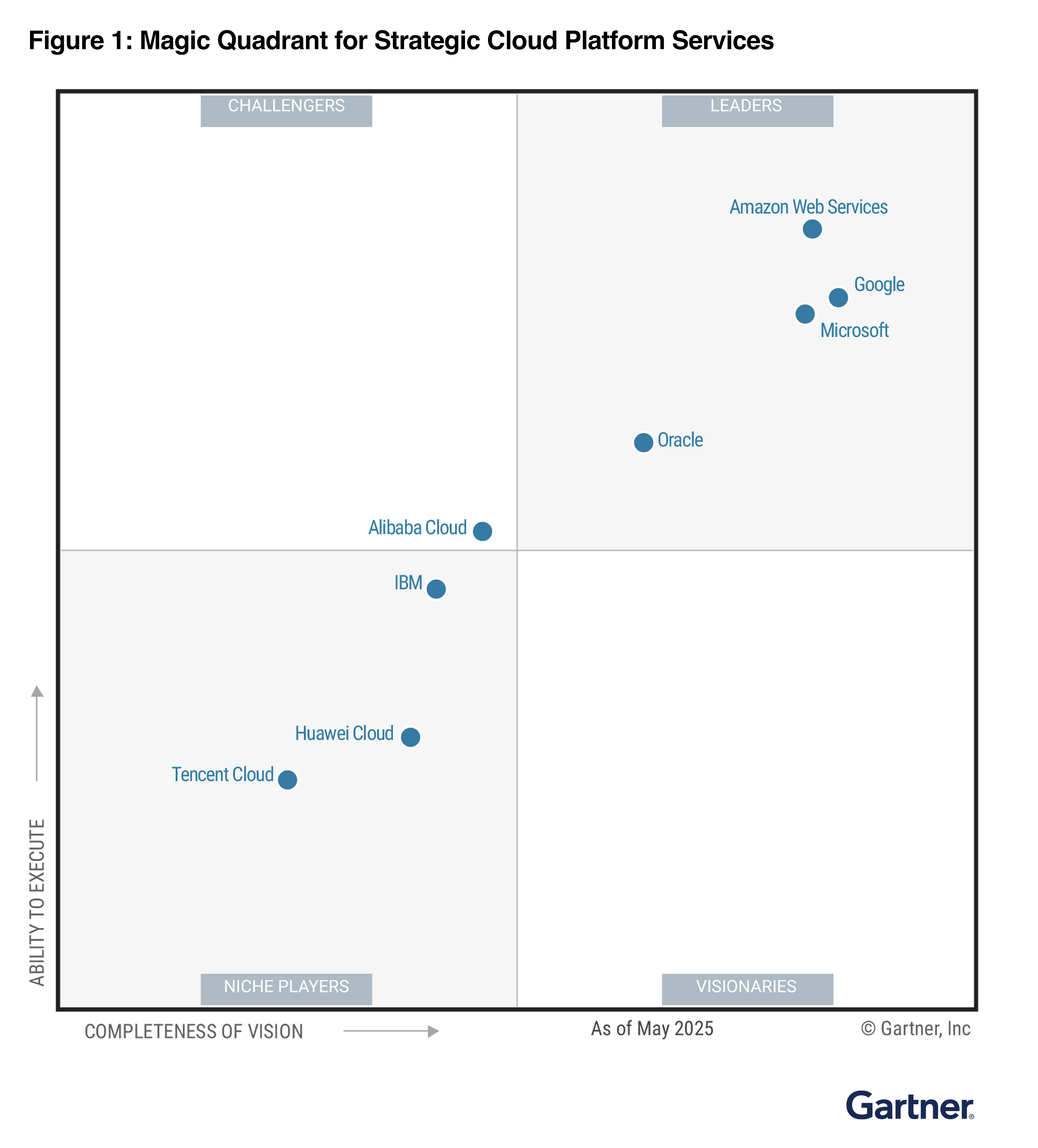
Gartner recognized AWS strengths as:
- Largest cloud community – AWS has built a strong global community of cloud professionals, providing significant opportunities for learning and engagement.
- Cloud-inspired silicon – AWS has used its cloud computing experience to develop custom silicon designs, including AWS Graviton, AWS Inferentia, and AWS Trainium, which enable tighter integration between hardware and software, improved power efficiency, and greater control over supply chains.
- Global scale and operational execution – AWS’s significant share of global cloud market revenue has enabled it to build a larger and more robust network of integration partners than some other providers in this analysis, which in turn helps organizations successfully adopt cloud.
The most common feedback I hear from customers is that AWS has the largest and most dynamic cloud community, making it easy to ask questions and learn from millions of active customers and tens of thousands of partners globally. We recently launched our community hub, AWS Builder Center to connect directly with AWS Heroes and AWS Community Builders. You can also explore and join AWS User Groups and AWS Cloud Clubs in a city near you.
We have also focused on facilitating the digital transformation of enterprise customers through a number of enterprise programs, such as the AWS Migration Acceleration Program. Using generative AI on migration and modernization, we introduced AWS Transform, the first agentic AI service developed to accelerate enterprise modernization of mission-critical business workloads such as .NET, mainframe, and VMware.
Access the complete full Gartner report to learn more. It outlines the methodology and evaluation criteria used to develop their assessments of each cloud service provider included in the report. This report can serve as a guide when choosing a cloud provider that helps you innovate on behalf of your customers.
— Channy
Gartner does not endorse any vendor, product or service depicted in its research publications and does not advise technology users to select only those vendors with the highest ratings or other designation. Gartner research publications consist of the opinions of Gartner’s research organization and should not be construed as statements of fact. Gartner disclaims all warranties, expressed or implied, with respect to this research, including any warranties of merchantability or fitness for a particular purpose.
GARTNER is a registered trademark and service mark of Gartner and Magic Quadrant is a registered trademark of Gartner, Inc. and/or its affiliates in the U.S. and internationally and are used herein with permission. All rights reserved.
Celebrating 10 years of Amazon Aurora innovation
Ten years ago, we announced the general availability of Amazon Aurora, a database that combined the speed and availability of high-end commercial databases with the simplicity and cost-effectiveness of open source databases.
As Jeff described it in its launch blog post: “With storage replicated both within and across three Availability Zones, along with an update model driven by quorum writes, Amazon Aurora is designed to deliver high performance and 99.99% availability while easily and efficiently scaling to up to 64 TiB of storage.”
When we started developing Aurora over a decade ago, we made a fundamental architectural decision that would change the database landscape forever: we decoupled storage from compute. This novel approach enabled Aurora to deliver the performance and availability of commercial databases at one-tenth the cost.
This is one of the reasons why hundreds of thousands of AWS customers choose Aurora as their relational database.
Today, I’m excited to invite you to join us for a livestream event on August 21, 2025, to celebrate a decade of Aurora database innovation.
A brief look back at the past
Throughout the evolution of Aurora, we’ve focused on four core innovation themes: security as our top priority, scalability to meet growing workloads, predictable pricing for better cost management, and multi-Region capabilities for global applications. Let me walk you through some key milestones in the Aurora journey.
We previewed Aurora at re:Invent 2014, and made it generally available in July 2015. At launch, we presented Aurora as “a new cost-effective MySQL-compatible database engine.”
In June 2016, we introduced reader endpoints and cross-Region read replicas, followed by AWS Lambda integration and the ability to load tables directly from Amazon S3 in October. We added database cloning and export to Amazon S3 capabilities in June 2017 and full compatibility with PostgreSQL in October that year.
The journey continued with the serverless preview in November 2017, which became generally available in August 2018. Global Database launched in November 2018 for cross-Region disaster recovery. We introduced blue/green deployments to simplify database updates, and optimized read instances to improve query performance.
In 2023, we added vector capabilities with pgvector for similarity search for Aurora PostgreSQL, and Aurora I/O-Optimized to provide predictable pricing with up to 40 percent cost savings for I/O-intensive applications. We launched Aurora zero-ETL integration with Amazon Redshift which enables near real-time analytics and ML using Amazon Redshift on petabytes of transactional data from Aurora by removing the need for you to build and maintain complex data pipelines that perform extract, transform, and load (ETL) operations. This year we added Aurora MySQL zero-ETL integration with Amazon Sagemaker, enabling near real-time access of your data in the lakehouse architecture of SageMaker to run a broad range of analytics.
In 2024, we made it as effortless as just one click to select Aurora PostgreSQL as a vector store for Amazon Bedrock Knowledge Bases and launched Aurora PostgreSQL Limitless Database, a serverless horizontal scaling (sharding) capability.
To simplify scaling for customers, we also increased the maximum storage to 128 TiB in September 2020, allowing many applications to operate within a single instance. Last month, we’ve further simplified scaling by doubling the maximum storage to 256 TiB, with no upfront provisioning required and pay-as-you-go pricing based on actual storage used. This enables even more customers to run their growing workloads without the complexity of managing multiple instances while maintaining cost efficiency.
Most recently, at re:Invent 2024, we announced Amazon Aurora DSQL, which became generally available in May 2025. Aurora DSQL represents our latest innovation in distributed SQL databases, offering active-active high availability and multi-Region strong consistency. It’s the fastest serverless distributed SQL database for always available applications, effortlessly scaling to meet any workload demand with zero infrastructure management.
Aurora DSQL builds on our original architectural principles of separation of storage and compute, taking them further with independent scaling of reads, writes, compute, and storage. It provides 99.99% single-Region and 99.999% multi-Region availability, with strong consistency across all Regional endpoints.
And in June, we launched Model Context Protocol (MCP) servers for Aurora, so you can integrate your AI agents with your data sources and services.
Let’s celebrate 10 years of innovation
 By attending the August 21 livestream event, you’ll hear from Aurora technical leaders and founders, including Swami Sivasubramanian, Ganapathy (G2) Krishnamoorthy, Yan Leshinsky, Grant McAlister, and Raman Mittal. You’ll learn directly from the architects who pioneered the separation of compute and storage in cloud databases, with technical insights into Aurora architecture and scaling capabilities. You’ll also get a glimpse into the future of database technology as Aurora engineers share their vision and discuss the complex challenges they’re working to solve on behalf of customers.
By attending the August 21 livestream event, you’ll hear from Aurora technical leaders and founders, including Swami Sivasubramanian, Ganapathy (G2) Krishnamoorthy, Yan Leshinsky, Grant McAlister, and Raman Mittal. You’ll learn directly from the architects who pioneered the separation of compute and storage in cloud databases, with technical insights into Aurora architecture and scaling capabilities. You’ll also get a glimpse into the future of database technology as Aurora engineers share their vision and discuss the complex challenges they’re working to solve on behalf of customers.
The event also offers practical demonstrations that show you how to implement key features. You’ll see how to build AI-powered applications using pgvector, understand cost optimization with the new Aurora DSQL pricing model, and learn how to achieve multi-Region strong consistency for global applications.
The interactive format includes Q&A opportunities with Aurora experts, so you’ll be able to get your specific technical questions answered. You can also receive AWS credits to test new Aurora capabilities.
If you’re interested in agentic AI, you’ll particularly benefit from the sessions on MCP servers, Strands Agents, and how to integrate Strands Agents with Aurora DSQL, which demonstrate how to safely integrate AI capabilities with your Aurora databases while maintaining control over database access.
Whether you’re running mission-critical workloads or building new applications, these sessions will help you understand how to use the latest Aurora features.
Register today to secure your spot and be part of this celebration of database innovation.
To the next decade of Aurora innovation!
SNI5GECT: Sniffing and Injecting 5G Traffic Without Rogue Base Stations, (Thu, Aug 14th)
As the world gradually adopts and transitions to using 5G for mobile, operational technology (OT), automation and Internet-of-Things (IoT) devices, a secure 5G network infrastructure remains critical. Recently, the Automated Systems SEcuriTy (ASSET) Research Group have released a new framework named SNI5GECT [pronounced as Sni-f-Gect (sniff + 5G + inject)] that enables users of the framework to i) sniff messages from pre-authentication 5G communication in real-time and ii) inject targeted attack payloads in downlink communications towards User Equipments (UE). I had previously written about how 5G connections are established over here, hence I will be diving directly into the SNI5GECT framework. In this diary, I will briefly provide an overview of the SNI5GECT framework and discuss a new multi-stage downgrade attack leveraging the SNI5GECT framework.
AI and Faster Attack Analysis [Guest Diary], (Wed, Aug 13th)
Meet our newest AWS Heroes — August 2025
We are excited to announce the latest cohort of AWS Heroes, recognized for their exceptional contributions and technical leadership. These passionate individuals represent diverse regions and technical specialties, demonstrating notable expertise and dedication to knowledge sharing within the AWS community. From AI and machine learning to serverless architectures and security, our new Heroes showcase the breadth of cloud innovation while fostering inclusive and engaging technical communities. Join us in welcoming these community leaders who are helping to shape the future of cloud computing and inspiring the next generation of AWS builders.
Kristine Armiyants – Masis, Armenia
 Community Hero Kristine Armiyants is a software engineer and cloud support engineer who transitioned into technology from a background in finance, having earned an MBA before becoming self-taught in software development. As the founder and leader of AWS User Group Armenia for over 2.5 years, she has transformed the local tech landscape by organizing Armenia’s first AWS Community Day, scaling it from 320 to 440+ attendees, and leading a team that brings international-scale events to her country. Through her technical articles in Armenian, hands-on workshops, and “no-filter” blog series, she makes cloud knowledge more accessible while mentoring new user group organizers and early-career engineers. Her dedication to community building has resulted in five new AWS Community Builders from Armenia, demonstrating her commitment to creating inclusive spaces for learning and growth in the AWS community.
Community Hero Kristine Armiyants is a software engineer and cloud support engineer who transitioned into technology from a background in finance, having earned an MBA before becoming self-taught in software development. As the founder and leader of AWS User Group Armenia for over 2.5 years, she has transformed the local tech landscape by organizing Armenia’s first AWS Community Day, scaling it from 320 to 440+ attendees, and leading a team that brings international-scale events to her country. Through her technical articles in Armenian, hands-on workshops, and “no-filter” blog series, she makes cloud knowledge more accessible while mentoring new user group organizers and early-career engineers. Her dedication to community building has resulted in five new AWS Community Builders from Armenia, demonstrating her commitment to creating inclusive spaces for learning and growth in the AWS community.
Nadia Reyhani – Perth, Australia
 Machine Learning Hero Nadia Reyhani is an AI Product Engineer who integrates DevOps best practices with machine learning systems. She is a former AWS Community Builder and regularly presents at AWS events on building scalable AI solutions using Amazon SageMaker and Bedrock. As a Women in Digital Ambassador, she combines technical expertise with advocacy, creating inclusive spaces for underrepresented groups in cloud and AI technologies.
Machine Learning Hero Nadia Reyhani is an AI Product Engineer who integrates DevOps best practices with machine learning systems. She is a former AWS Community Builder and regularly presents at AWS events on building scalable AI solutions using Amazon SageMaker and Bedrock. As a Women in Digital Ambassador, she combines technical expertise with advocacy, creating inclusive spaces for underrepresented groups in cloud and AI technologies.
Raphael Manke – Karlsruhe, Germany
 DevTools Hero Raphael Manke is a Senior Product Engineer at Dash0 and the creator of the unofficial AWS re:Invent planner, which is used to help build a schedule for the event. With a decade of AWS experience, he specializes in serverless technologies and DevTools that streamline cloud development. As the organizer of the AWS User Group in Karlsruhe and a former AWS Community Builder, he actively contributes to product enhancement through public speaking and direct collaboration with AWS service teams. His commitment to the AWS community spans from local user group leadership to providing valuable feedback to service teams.
DevTools Hero Raphael Manke is a Senior Product Engineer at Dash0 and the creator of the unofficial AWS re:Invent planner, which is used to help build a schedule for the event. With a decade of AWS experience, he specializes in serverless technologies and DevTools that streamline cloud development. As the organizer of the AWS User Group in Karlsruhe and a former AWS Community Builder, he actively contributes to product enhancement through public speaking and direct collaboration with AWS service teams. His commitment to the AWS community spans from local user group leadership to providing valuable feedback to service teams.
Rowan Udell – Brisbane, Australia
 Security Hero Rowan Udell is an independent AWS security consultant specializing in AWS Identity and Access Management (IAM). He has been sharing AWS security expertise for over a decade through books, blog posts, meet-ups, workshops, and conference presentations. Rowan has taken part in many AWS community programs, was an AWS Community Builder for four years, and is part of the AWS Community Day Australia Organizing Committee. A frequent speaker at AWS events including Sydney Summit and other community meetups, Rowan is known for transforming complex security concepts into simple, practical, and workable solutions for businesses securing their AWS environments.
Security Hero Rowan Udell is an independent AWS security consultant specializing in AWS Identity and Access Management (IAM). He has been sharing AWS security expertise for over a decade through books, blog posts, meet-ups, workshops, and conference presentations. Rowan has taken part in many AWS community programs, was an AWS Community Builder for four years, and is part of the AWS Community Day Australia Organizing Committee. A frequent speaker at AWS events including Sydney Summit and other community meetups, Rowan is known for transforming complex security concepts into simple, practical, and workable solutions for businesses securing their AWS environments.
Sangwoon (Chris) Park – Seoul, Korea
 Serverless Hero Sangwoon (Chris) Park leads development at RECON Labs, an AI startup specializing in AI-driven 3D content generation. He is a former AWS Community Builder and the creator of “AWS Classroom” YouTube channel, and he shares practical serverless architecture knowledge with the AWS community. Chris hosts monthly AWS Classroom Meetups and the AWS KRUG Serverless Small Group, actively promoting serverless technologies through community events and educational content.
Serverless Hero Sangwoon (Chris) Park leads development at RECON Labs, an AI startup specializing in AI-driven 3D content generation. He is a former AWS Community Builder and the creator of “AWS Classroom” YouTube channel, and he shares practical serverless architecture knowledge with the AWS community. Chris hosts monthly AWS Classroom Meetups and the AWS KRUG Serverless Small Group, actively promoting serverless technologies through community events and educational content.
Toshal Khawale – Pune, India
 Community Hero Toshal Khawale is an experienced technology leader with over 22 years of expertise in engineering and AWS cloud technology, holding 12 AWS certifications that demonstrate his cloud knowledge. As a Managing Director at PwC, Toshal guides organizations through cloud transformation, digital innovation, and application modernization initiatives, having led numerous large-scale AWS migrations and generative AI implementations. He was an AWS Community Builder for six years and continues to serve as the AWS User Group Pune Leader, actively fostering community engagement and knowledge sharing. Through his roles as a mentor, frequent speaker, and advocate, Toshal helps organizations maximize their AWS investments while staying at the forefront of cloud technology trends.
Community Hero Toshal Khawale is an experienced technology leader with over 22 years of expertise in engineering and AWS cloud technology, holding 12 AWS certifications that demonstrate his cloud knowledge. As a Managing Director at PwC, Toshal guides organizations through cloud transformation, digital innovation, and application modernization initiatives, having led numerous large-scale AWS migrations and generative AI implementations. He was an AWS Community Builder for six years and continues to serve as the AWS User Group Pune Leader, actively fostering community engagement and knowledge sharing. Through his roles as a mentor, frequent speaker, and advocate, Toshal helps organizations maximize their AWS investments while staying at the forefront of cloud technology trends.
Learn More
Visit the AWS Heroes webpage if you’d like to learn more about the AWS Heroes program, or to connect with a Hero near you.
— Taylor






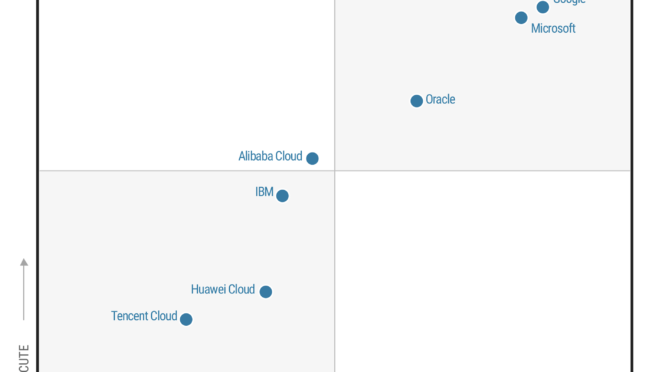
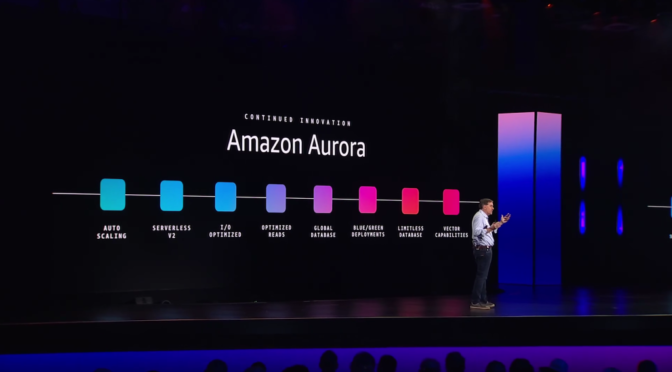
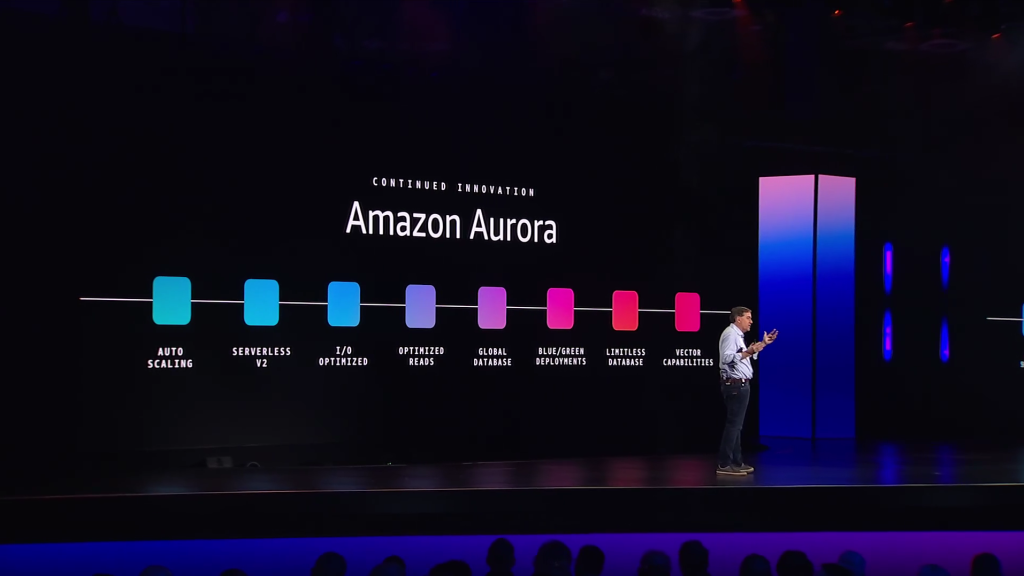
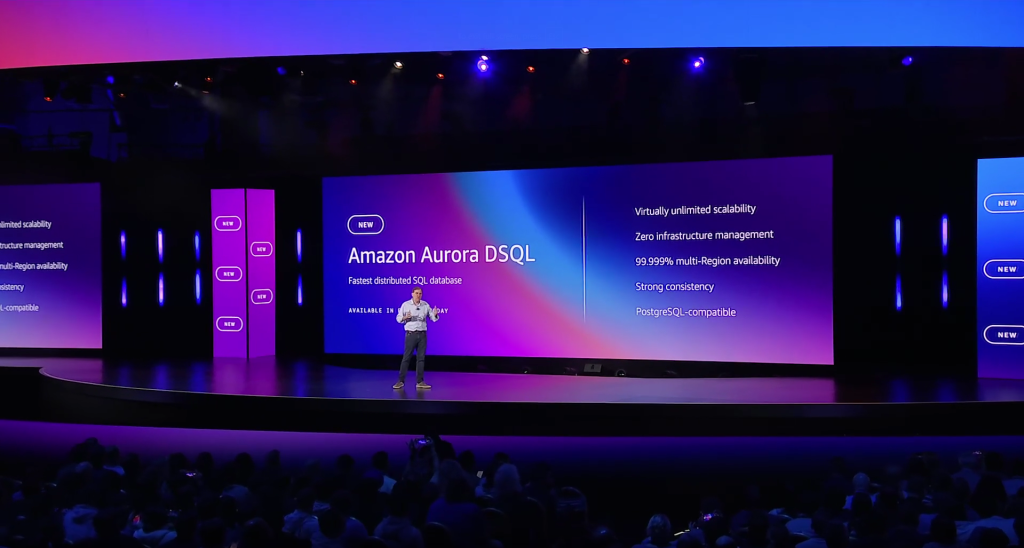

![AI and Faster Attack Analysis [Guest Diary], (Wed, Aug 13th)](https://www.ironcastle.net/wp-content/uploads/2025/08/status-6.gif)
